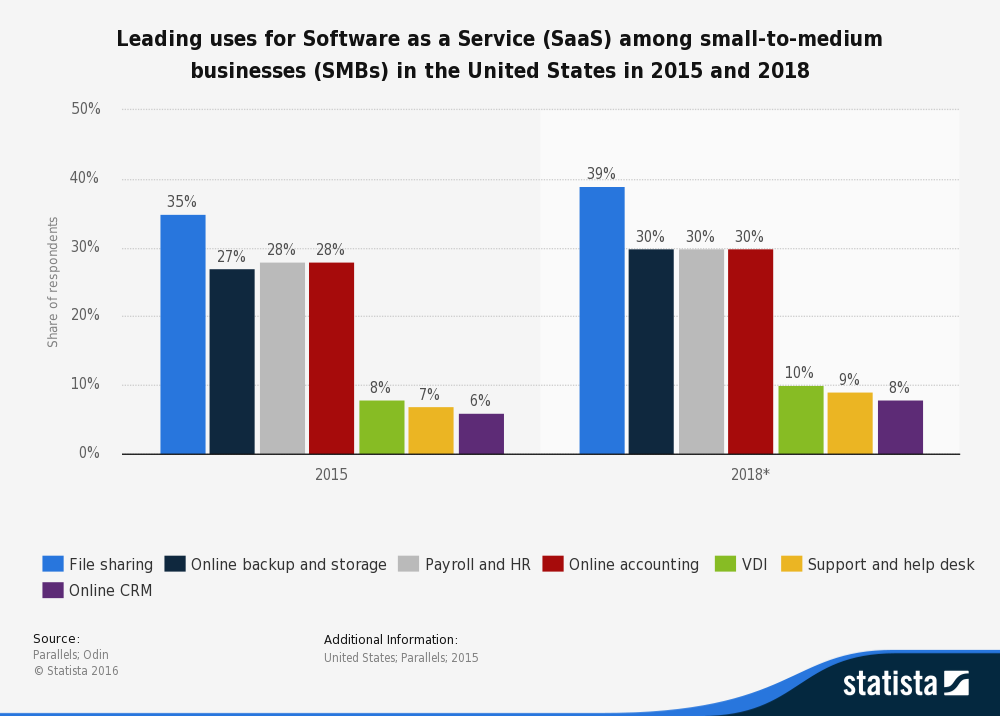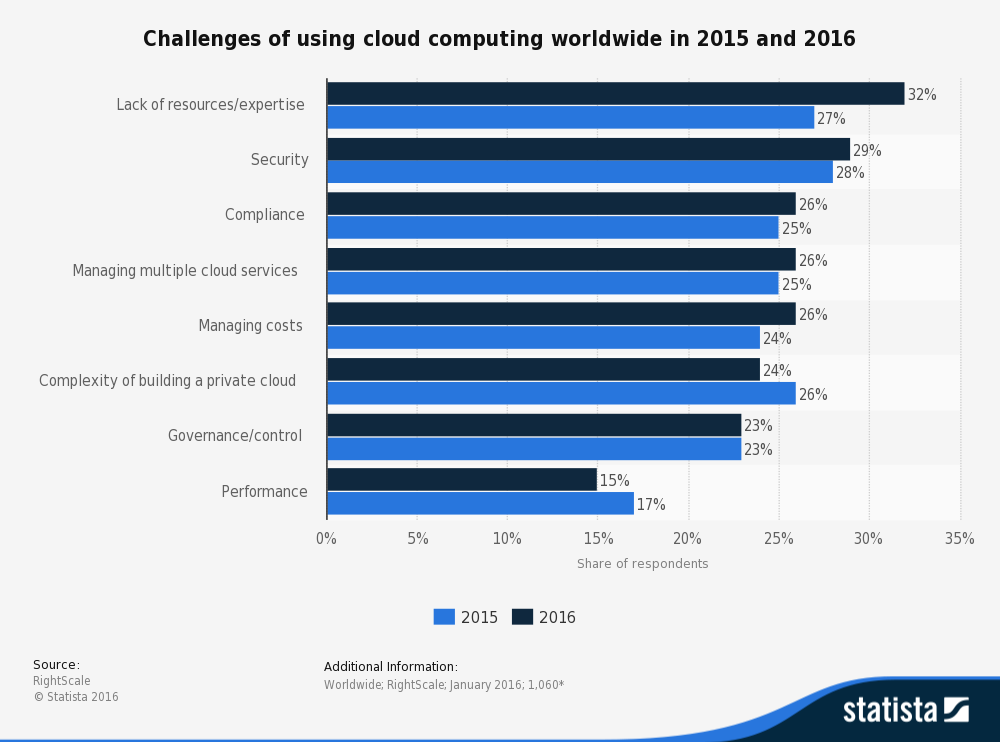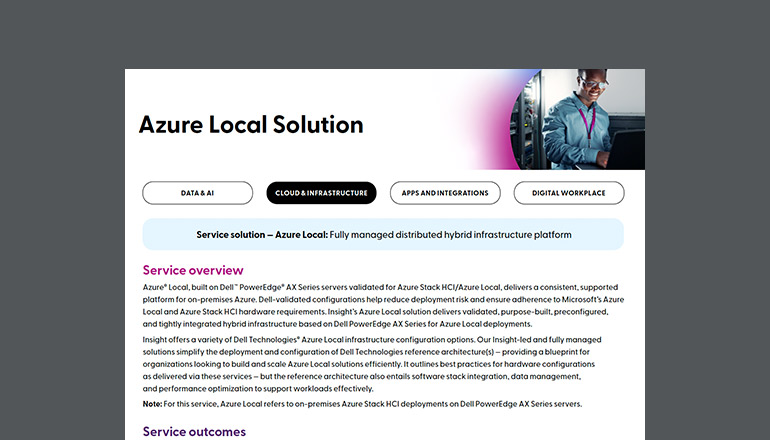Article Small Businesses Need a Cloud Computing Strategy Too
A couple years ago, a tiny startup disrupted the transportation industry without a single fleet of vehicles.
By Amanda Best / 31 Jan 2017 / Topics: Cloud Hybrid cloud

Around the same time, an app changed the entire hospitality industry without any properties in its portfolio. You’ve heard these two examples mentioned time and time again. My point is, size and industry don’t matter.
Whether you’re a tech-based disrupter like Uber and AirBnb, or a local manufacturing company making traffic barricades, you may have started in a garage, but your ultimate goal is most likely to grow your business. This is why it’s important to know what large enterprises are up to when it comes to infrastructure planning. If you hope to continue scaling your business, this conversation is for you.
The cloud difference between enterprises and SMBs
Lately, Small and Medium Businesses (SMBs) are talking about public cloud and enterprises are talking about hybrid cloud. We dive into public cloud providers like Amazon Web Services (AWS) and Microsoft Azure in previous articles, and their specialty providing public cloud data center services on a subscription basis. So catch up on that conversation if you can.
We’ve also helped you map out whether to use hybrid cloud in this private cloud vs. public cloud infographic. The chart can help you decide whether an on-premise virtualized data center, public cloud or a mixture of the two with a hybrid cloud approach, is right for you.
Let’s spend the rest of our time discussing cloud computing for small business, what’s pushing public cloud trends and why it’s important to borrow from enterprise best practices by developing a cloud computing strategy.
Why SMBs love public cloud computing
If your SMB is using average workloads, and growing at a steady but not explosive pace, that infographic will steer you toward an all public cloud computing approach. That’s the right place for you right now. So what are the benefits of cloud computing, and what infrastructure challenges come with the territory?

According to Figure 1, the main cloud software use for SMBs is file sharing. From 2015 to 2018, file sharing usage is expected to increase from 35% to 39%. The second most common use for SaaS is online accounting; 28% of SMBs reported using it in 2015 and that’s expected to grow by 2% in 2018. Other top uses include online backup and storage; payroll and human resources platforms; Virtual Desktop Infrastructure (VDI); support and help desk; and online Customer Relationship Management (CRM).
Creative and marketing departments also find cloud software like Adobe Creative Suites helpful.
The benefits of cloud computing with apps like these, or Software as a Service (SaaS), are mobile workers can log in from anywhere, and participate in real-time collaboration. This makes businesses more nimble to market demands, consequentially improving customer engagement and service. SaaS is also such a great fit for small businesses because each department can pay for it out of operational budget, versus asking the company for a large up-front investment.
The need for a cloud computing strategy
This all sounds great, so what’s the problem? In short, cloud control. In most companies deploying public cloud apps today, the stakeholders are the ones subscribing to apps to improve productivity and customer engagement, and only involve IT when something breaks. This can cause a number of problems including:
- Security issues if users aren’t adhering to company compliance best practices
- Excessive spending if multiple departments are purchasing the same apps
- Getting locked into bad contracts
- Inefficiencies if cloud software resources aren’t managed properly

The 2016 survey of businesses worldwide in Figure 2, shows that 32% of companies said a lack of expertise was the biggest challenge of cloud computing. The next greatest hurdle reported was security, with 29% reporting issues, and 26% reporting compliance was a problem. Other cloud computing challenges include managing multiple cloud services, managing costs, governance and performance.
A strategy leads to a strong cloud
While these were the biggest issues reported, security, affordability and performance can also be the greatest benefits of cloud computing if proper management of these services is in place. Does your SMB or enterprise have a cloud computing strategy?
Forrester recommends, “I&O pros should get out in front of cloud demand today with a unified cloud strategy that meets the needs of their three primary cloud stakeholders: business leaders, development teams, and technology managers themselves,” in the 2016 report, “Take the Wheel: Build Your Cloud Computing Strategic Plan Now.”
Why enterprises love hybrid cloud
Lastly, as a look ahead, let’s discuss why enterprises are engaging in both public cloud services, while maintaining their own private cloud. It has to do not only with control, but Total Cost of Ownership (TCO).
Here’s a quick analogy. It’s like leasing a car versus paying cash for a car. Paying for on-premise data center resources up front requires a significant Capital Expense (CapEX) investment, but doing so can save your business in the long run from monthly fees associated with leasing data center services from public cloud providers. And these fees will only grow with the number of active users and features applied.
At what point should you start investing in on-premise data center infrastructure with private cloud capabilities? The answer relies largely on the findings from a set of analytical questions. What apps are you using? Where do they reside — in the cloud, or on premises? Where do you want your business to go?






